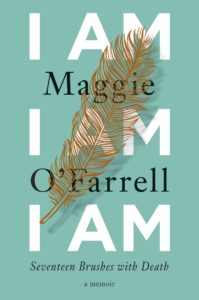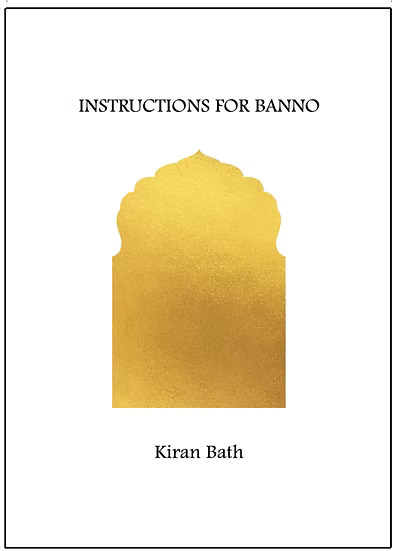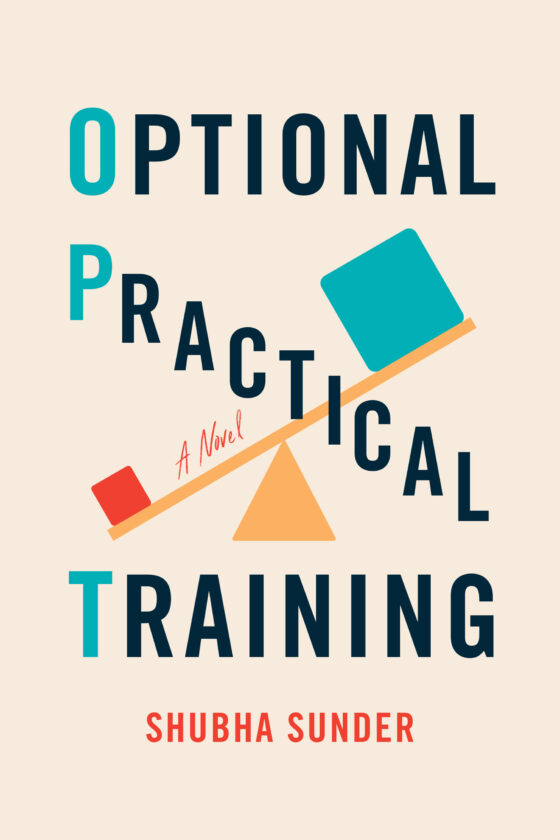
Acclaimed novelist Maggie O’Farrell’s memoir I Am I Am I Am: Seventeen Brushes with Death unfurls with a crescendo of events, both subtle and terrifying, that build to reveal a fascinating array of near-death experiences. The title refers to Sylvia Plath’s The Bell Jar and this book begins with a quote from that one. The choice sets the standard for how deep we will be plunged into human perceptions.
The content of the chapters, or “brushes,” is fascinating: being partially strangled on a mountain path by a deranged birdwatcher; being swept out to sea in the Indian Ocean while watching an elephant be washed; being pushed onstage at a carnival, only to have knives thrown at her and land dangerously close to her body as she is strapped to a wooden wheel. What makes this memoir so fine, so special, is not just the power of these brushes with death, but her examination of them.
In “Whole Body,” O’Farrell relays an experience she endured on a flight to Hong Kong during which the plane almost crashed. Her language is precise and evocative, pregnant with meaning. It reveals her technical mastery as well as her deft use of symbolism:
The downwards velocity is astonishing, the drag, the speed of it. It feels like the world’s most unpleasant fairground ride, like a dive into nothing, like being pulled by the ankles into the endless maw of the underworld. My ears and face bloom petals of pain, the seatbelt cutting into my thighs as I am thrown upwards. Around me the cabin is shaken like a snow globe: handbags, juice cans, apples, shoes, sweaters rise from the floor. Oxygen masks swing like lianas from the ceiling and human beings are tossed into the air.
The book uses a structural device that proves to be quite effective: each chapter has a title relating to the part of the body that was affected by the brush with death as well as an illustration or sketch to accompany it. Seeing the small sketch of the human skull before plunging into “Cranium” caused me to experience her near-decapitation experience with an increased visceral intensity.
This memoir is extremely readable. One might think that a collection of essays on death might be maudlin and slow, but there is something that pulls the reader along at a steady clip—somehow O’Farrell has made this sharing of true stories into an adventure, revealing how precious life is, how confusing it is, and how horrifying glimpses into the other side can be. Some essays are deeply emotional while other employ a wry humor to great effect. You never know what you are going to get from one moment to the next. “Bloodstream” ends in a devastating manner, but earlier in this section, the reader delights in the dark humor as the writer processes a breakup in her twenties, sparked by finding a “flesh-colored bra” under their bed. The boyfriend finally confesses that he slept with several women and says “I did it for us” as his final irrational plea to save their relationship. This becomes constant fodder for jokes between O’Farrell and a coworker, who eventually get tested for sexually transmitted diseases.
“Neck” retells a mugging that happened to the author and her partner by a man who holds a machete to her neck. She relays finally handing over all of their money in the hopes of surviving the attack:
The man takes it all from us, pulling it out from the various places in which we’d stashed it. We hand it to him, in exchange for my neck, its arteries, its tendons, its muscles, its trachea, its oesophagus, for it all to remain in its current state.
The violence transforms the couple and perhaps also accelerates their life together:
Is there something about the experience beside the lake that pushed us forwards, made us exit one stage of life and enter the next? Did my escape from under the machete impress upon both of us the fragility, the mutability of human life?
The narrative kept this reader on her toes throughout because although the experiences with death happen on a grand scale with violence and terror, they also exist in more common and also quieter moments. In “Abdomen” she explores the Caesarian section that ended up in dangerous territory, as well as her emotional experience with miscarriage. Readers will find they can relate to her pain. Her insights can help excavate our way out of the confusion and pain that are wrapped around an experience like that. O’Farrell has been patronized by doctors. She has been misunderstood. She has been humiliated. And her gift is her ability to articulate moments of humiliation so as to transcend them. All of this is relayed brilliantly. There was not a single false moment in the book.
O’Farrell’s chapters often involve her traveling to far reaches of the world and this element infuses the book with an additional sense of adventure and intrigue. I could not help but be reminded of Barry Lopez’s collection of essays, About This Life: Journeys on the Threshold of Memory, which happens to be an all-time favorite of mine, a book I have read and reread several times because it is so rich, dripping with insight and truth. While similar to Lopez in these regards, O’Farrell’s book ultimately stands alone. We see her move from one partner to another in the background of her close calls with death; we see her being shaped by life’s experiences. We watch her deal with her own children’s illnesses and brushes with death, which allows her to understand her own parents’ terror when she was seriously ill, such as in “Cerebellum.”
The book is quite intimate in all senses of the word—physically, psychologically, mentally, and emotionally. There is something truly generous about her style. Reading this memoir is like being taken further and further through the layers of a human life down to some mysterious core from which all meaning emanates. It shows us what it means to be vulnerably alive, to digest the seemingly indigestible fact of our mortality. This is a memoir to be cherished.




